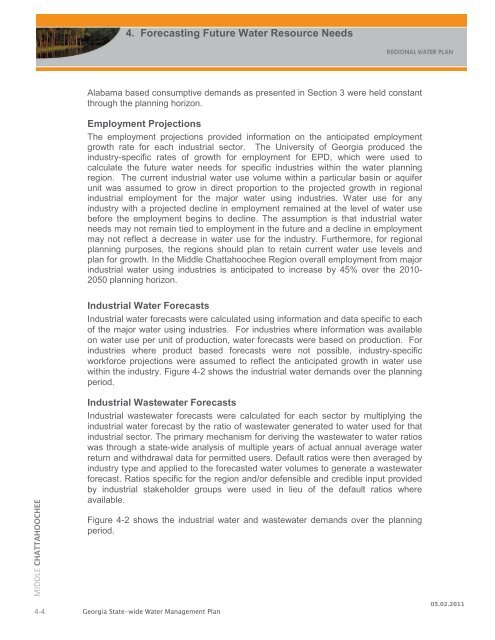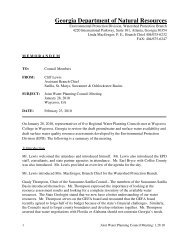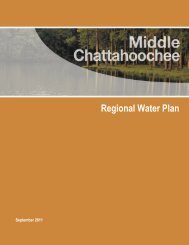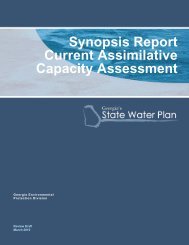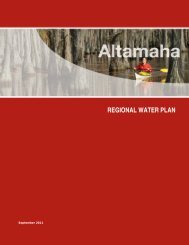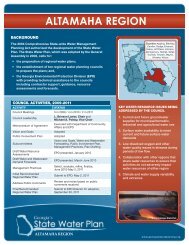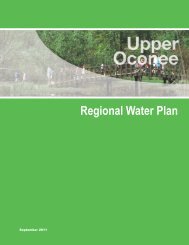Middle Chattahoochee Middle Chattahoochee
Middle Chattahoochee Middle Chattahoochee
Middle Chattahoochee Middle Chattahoochee
- No tags were found...
Create successful ePaper yourself
Turn your PDF publications into a flip-book with our unique Google optimized e-Paper software.
4. Forecasting Future Water Resource NeedsAlabama based consumptive demands as presented in Section 3 were held constantthrough the planning horizon.Employment ProjectionsThe employment projections provided information on the anticipated employmentgrowth rate for each industrial sector. The University of Georgia produced theindustry-specific rates of growth for employment for EPD, which were used tocalculate the future water needs for specific industries within the water planningregion. The current industrial water use volume within a particular basin or aquiferunit was assumed to grow in direct proportion to the projected growth in regionalindustrial employment for the major water using industries. Water use for anyindustry with a projected decline in employment remained at the level of water usebefore the employment begins to decline. The assumption is that industrial waterneeds may not remain tied to employment in the future and a decline in employmentmay not reflect a decrease in water use for the industry. Furthermore, for regionalplanning purposes, the regions should plan to retain current water use levels andplan for growth. In the <strong>Middle</strong> <strong>Chattahoochee</strong> Region overall employment from majorindustrial water using industries is anticipated to increase by 45% over the 2010-2050 planning horizon.Industrial Water ForecastsIndustrial water forecasts were calculated using information and data specific to eachof the major water using industries. For industries where information was availableon water use per unit of production, water forecasts were based on production. Forindustries where product based forecasts were not possible, industry-specificworkforce projections were assumed to reflect the anticipated growth in water usewithin the industry. Figure 4-2 shows the industrial water demands over the planningperiod.MIDDLE CHATTAHOOCHEEIndustrial Wastewater ForecastsIndustrial wastewater forecasts were calculated for each sector by multiplying theindustrial water forecast by the ratio of wastewater generated to water used for thatindustrial sector. The primary mechanism for deriving the wastewater to water ratioswas through a state-wide analysis of multiple years of actual annual average waterreturn and withdrawal data for permitted users. Default ratios were then averaged byindustry type and applied to the forecasted water volumes to generate a wastewaterforecast. Ratios specific for the region and/or defensible and credible input providedby industrial stakeholder groups were used in lieu of the default ratios whereavailable.Figure 4-2 shows the industrial water and wastewater demands over the planningperiod.4-4Georgia State-wide Water Management Plan05.02.2011


